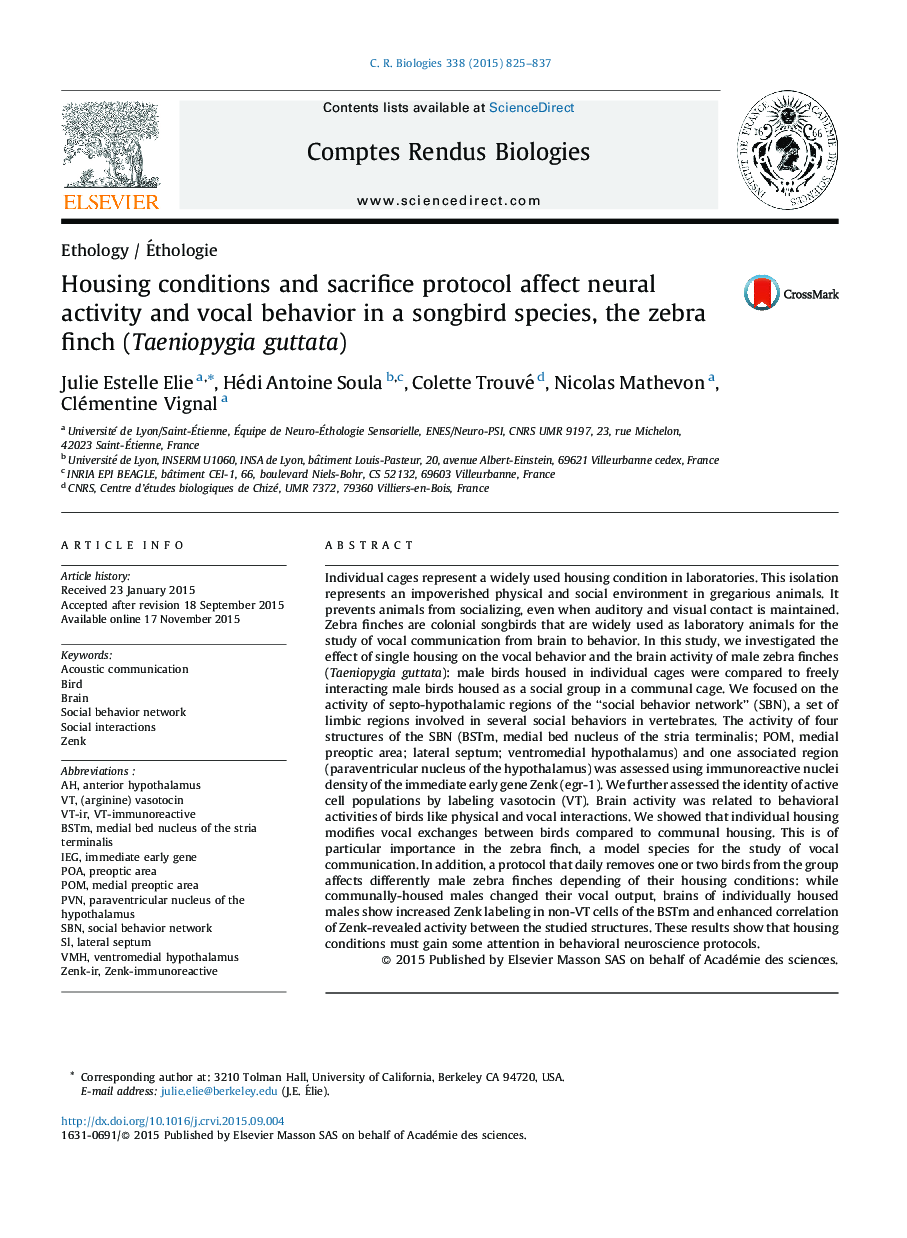| Article ID | Journal | Published Year | Pages | File Type |
|---|---|---|---|---|
| 2783293 | Comptes Rendus Biologies | 2015 | 13 Pages |
Individual cages represent a widely used housing condition in laboratories. This isolation represents an impoverished physical and social environment in gregarious animals. It prevents animals from socializing, even when auditory and visual contact is maintained. Zebra finches are colonial songbirds that are widely used as laboratory animals for the study of vocal communication from brain to behavior. In this study, we investigated the effect of single housing on the vocal behavior and the brain activity of male zebra finches (Taeniopygia guttata): male birds housed in individual cages were compared to freely interacting male birds housed as a social group in a communal cage. We focused on the activity of septo-hypothalamic regions of the “social behavior network” (SBN), a set of limbic regions involved in several social behaviors in vertebrates. The activity of four structures of the SBN (BSTm, medial bed nucleus of the stria terminalis; POM, medial preoptic area; lateral septum; ventromedial hypothalamus) and one associated region (paraventricular nucleus of the hypothalamus) was assessed using immunoreactive nuclei density of the immediate early gene Zenk (egr-1). We further assessed the identity of active cell populations by labeling vasotocin (VT). Brain activity was related to behavioral activities of birds like physical and vocal interactions. We showed that individual housing modifies vocal exchanges between birds compared to communal housing. This is of particular importance in the zebra finch, a model species for the study of vocal communication. In addition, a protocol that daily removes one or two birds from the group affects differently male zebra finches depending of their housing conditions: while communally-housed males changed their vocal output, brains of individually housed males show increased Zenk labeling in non-VT cells of the BSTm and enhanced correlation of Zenk-revealed activity between the studied structures. These results show that housing conditions must gain some attention in behavioral neuroscience protocols.
